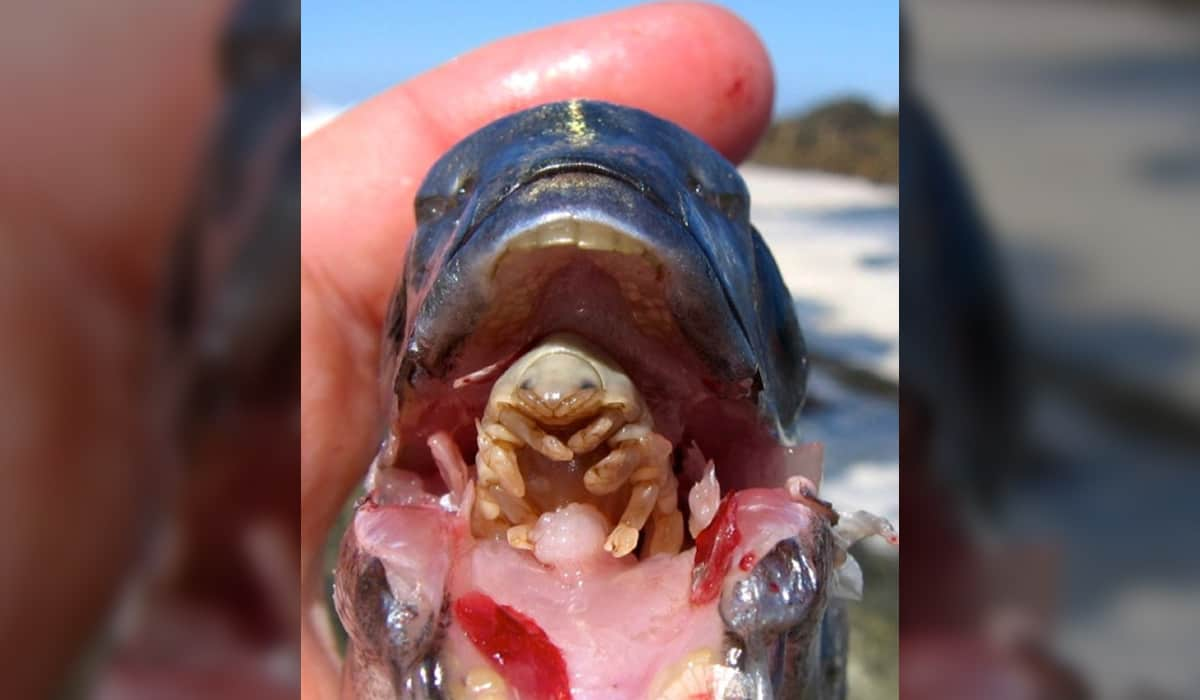5 Terrifying, Alien-like Fish Parasites
Daniel Xu 01.19.15

Back in November, we covered a host of common game fish diseases and parasites, ranging from disgusting—yet run-of-the-mill—tapeworms to the very common black spot disease, also known as Neascus. This list is a little bit different, and includes some of the parasites that were either too bizarre or simply too outlandish to include in that article. There are a lot of critters in the water that do not mind piggy-backing on some tasty fish for survival, but these five parasites do it in a way that to us, can only be described as alien-like.
As with most fish parasites, wildlife officials advise cooking fish thoroughly before consumption. It is not yet fully known if some of the below parasites can prove to be detrimental to human health, so when in doubt, discard the fish.
The tongue-eating louse—Cymothoa exigua

This parasitic isopod is perhaps the most well-known on this list, and will certainly guarantee a shock to any angler who finds one in their dinner. As you can imagine from the parasite’s name, the tongue-eating louse enters fish through the gills and proceeds to eat the animal’s tongue. What it does next however, is attach itself to the stub that is left and will function as the fish’s new tongue for the duration of its stay. Once attached, the isopod leeches off the fish’s body fluids, such as blood and mucus, and oftentimes will grow much larger than the appendage they replaced.
Surprisingly, the host fish does not seem to be harmed by the process—save for the missing tongue—and Cymothoa exigua is the only known parasite that can functionally replace a host organ. The tongue-eating louse is actually quite widespread in the Pacific Ocean, and is known to infect game fish such as snappers and drums.
You can learn more about this isopod in the video below:
The castration barnacle—Anelasma squalicola

Most species of goose barnacles are content to attach themselves to a hard surface and filter the water for food, but at least one has developed a more insidious method. This particular barnacle is known as Anelasma, and what it does to fish is pure nightmare fuel. The Anelasma barnacle specifically targets deep-water sharks and will bury themselves directly into the fish’s back. Once it is comfortable in its new home, the barnacle then sends out a number of small roots past the shark’s spine and into tissue pockets. These tendrils are how the barnacle draws nutrients from the shark, but the barnacle does not stop there. Anelasma earned its horrifying moniker because it can shut down the shark’s reproduction system, although scientists are not entirely sure how.
Think Anelasma is scary? Regular goose barnacles may creep you out too:
The jellyfish spore hive—Myxozoa

For more than 100 years scientists have misclassified Myxozoa, a parasite that can infect fish, birds, and even mammals, as a protozoan. In fact, they are actually a type of jellyfish, and a highly infectious group of jellyfish to boot. These tiny jellyfish sport special “harpoon cells” that anchor themselves to a host, penetrating the host’s tissue and allow the Myxozoa to attack different organs, such as spinal tissues, the brain, liver, or heart. Myxozoa also reproduce rapidly by engulfing one another to form new spores, which will eventually cover the fish in a slimy mess. Infection in fish can last for long durations and in many cases, will span the entire life of the fish.
Despite this, Myxozoa usually do not cause serious problems in their host. Wild fish have already developed a natural resistance to their tiny jellyfish invaders, and few will succumb to the parasites. In farmed fish however, fatality rates can be as high as 90 percent.

The face-biting Snuffbox—Epioblasma triquetra

This species of freshwater mussel, known as the snuffbox, hides a violent nature under its unassuming shell. Not unlike many other mussels, the snuffbox begins life as a parasite during its larval “glochidia” stage. In 2004, researchers discovered that the snuffbox’s method to find hosts for its young is somewhat… different. Female snuffboxes will lure in unsuspecting fish and then clamp down on their mouth with its shell, which are lined with small “teeth.” The mussel will then pump its parasitic young straight into the fish’s face, hoping to propel most of them into its victim’s gills. The snuffbox is not polite about it either, and will often do so with such force that the host fish is unintentionally killed. It’s most common victim is the common logperch, which is strong enough to survive the initial contact.
However, the snuffbox is also quite rare and is currently protected under the Endangered Species Act. Watch it attack a fish below:
Fish lice—Argulidae

The Argulidae family of fish lice contains a number of parasitic crustaceans which vary in size from a few millimeters to over an inch long. Usually characterized by a flat, rounded body protected by a carapace, these unsightly parasites attach themselves to fish and feed on internal fluids. In some cases, fish lice will even eat the fish’s scales for nutrients. Understandably, fish lice are a major problem for aquarium hobbyists, and even occasionally in the wild.
They are quite energetic once scrapped off fish, as you can see below:

